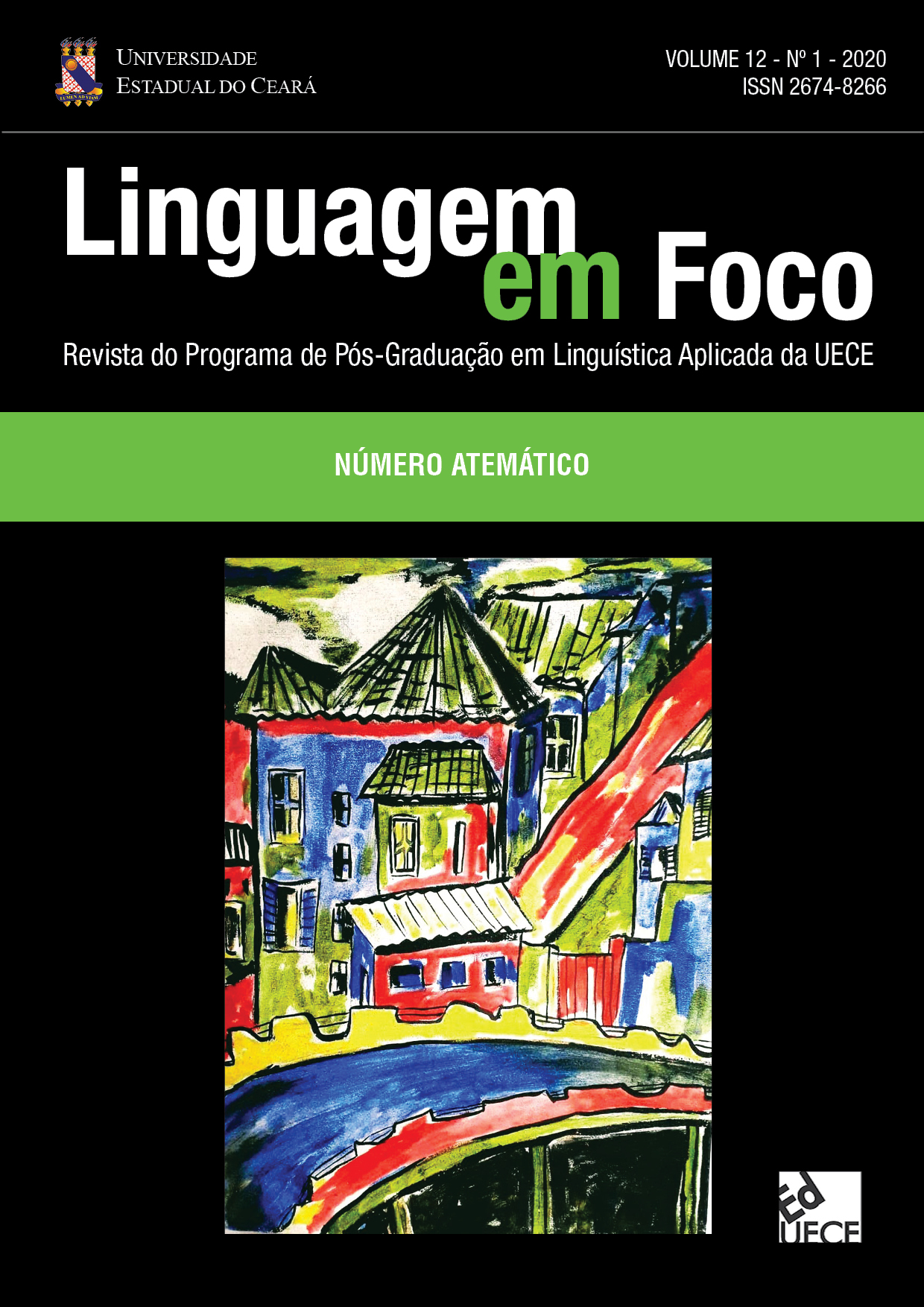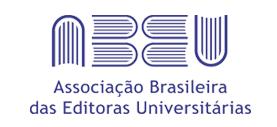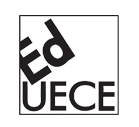Língua Brasileira de Sinais e formação de professores
Uma análise de conteúdos e estratégias metodológicas no ensino de Libras L1
DOI:
https://doi.org/10.46230/2674-8266-12-3173Palabras clave:
Ensino, Libras, Primeira língua, Estratégias de ensinoResumen
Com a oficialização da Língua Brasileira de Sinais – Libras - por meio da lei 10.436/02 e do decreto 5626/05, surge a necessidade da formação em nível superior de professores dessa língua. A partir dessa exigência, a Universidade Federal de Santa Catarina criou o curso semipresencial de Letras/Libras. O presente trabalho tem como objetivo refletir sobre o ensino da Libras como L1, enfocando as estratégias de ensino e os conteúdos propostos por alunos-estagiários desse curso no polo da Universidade Federal do Ceará. Foram analisados os projetos de trabalho, os relatórios de estágio, além das aulas de Libras ministradas. As reflexões construídas nesse trabalho dialogam com autores, tais como: Antunes (2003; 2007) e Possenti (1996) e nos apontam alguns resultados, tais como: a) os estagiários selecionaram conteúdos gramaticais com enfoque descritivo em detrimento de um enfoque gramatical reflexivo e às situações de compreensão e produção de gêneros textuais em língua de sinais; b) a atuação docente revela certo engessamento quanto ao domínio e aplicação do conteúdo; e c) significativa interferência da Língua Portuguesa (L2) nas situações didáticas. Esses resultados nos sugerem que a recência do ensino de Libras pode levar os alunos-estagiários a buscarem fundamentos para organizar a sua ação docente.
Descargas
Citas
ANTUNES, I. Aula de Português: Encontro e interação. São Paulo: Parábola Editorial, 2003.
_____ Língua, texto e ensino: outra escola possível. São Paulo: Parábola Editoria, 2009.
BAKHTIN, M. Os gêneros do discurso. Estática da Criação Verbal. São Paulo, Martins Fontes: 1997.
BASSO, I. M. de S.; STROBEL, K.L.; MASUTTI, M. Metodologia do ensino de Libras L1. Curso de Letras Libras. CCE/UFSC - 2009.
BRASIL. Decreto nº 5.626, de 22 de dezembro de 2005. Regulamenta a Lei no 10.436, de 24 de abril de 2002, que dispõe sobre a Língua Brasileira de Sinais - Libras, e o art. 18 da Lei no 10.098, de 19 de dezembro de 2000.
BRASIL. Lei nº 10.436 de 24 de Abril de 2002. Dispõe sobre a Língua Brasileira de Sinais - Libras e dá outras providências.
COSTA, A. N. A e ARAÚJO, J. C. Notícia no jornal escolar: o que sabem os alunos acerca dos gêneros que produzem? In: ARAÚJO, J. C. e DIEB, M. Linguagem e Educação: fios que se entrecruzam na escola. Belo Horizonte: Autêntica, 2007. p. 89 – 99.
LODI, A. C. B.; LUCIANO, R. T. Desenvolvimento da linguagem de crianças surdas em língua brasileira de sinais. In: LODI, A. C. B.; LACERDA, C. B. F. de (orgs). Uma escola, duas línguas: letramentos em língua portuguesa e língua de sinais nas etapas iniciais de escolarização. Porto Alegre: Mediação, 2009.
MACIEL, A. S. N. & BOMURA, L. S. Formação de professores: presente, passado e futuro. São Paulo: Cortez, 2004.
MARCUSCHI, L. A. Gêneros Textuais: o que são e como se constituem. Recife: UFPE, 2002.
PIMENTA, S. G. O estágio na formação de professores: unidade teoria e prática. 5ª Ed. São Paulo: Cortez, 2002.
PIMENTA, S. G. & LIMA, M. S. L. Estágio e docência. São Paulo, 2004.
POSSENTI, S. Por que (não) ensinar gramática na escola. São Paulo: Mercado de Letras, 1996.
QUADROS, R. M. de, Alfabeitização e o ensino de língua de sinais. Textura. Canoas, n.3, p. 53-62.
RANGEL, G.; LIMA, S.; SILVA, V. Estágio supervisionado. Curso de Letras Libras CCE/UFSC - 2010.
SILVEIRA, H. O currículo de Língua de Sinais e os professores surdos: poder, identidade e cultura surda. In: QUADROS, R de M. e PERLIN, G. Estudos Surdos II. Petropólis, RJ: Arara Azul, 2007. p. 150 – 189.
STOKOE, W. C. Sign Language Structure. Reedição. Silver Spring-Maryland: Linstok Press, 1960.
TRAVAGLIA, L. C. Gramática e interação: uma proposta para o ensino de gramática no 1º e 2º graus. 2ª Ed. São Paulo: Cortez, 1997.
Descargas
Publicado
Cómo citar
Número
Sección
Licencia
Derechos de autor 2020 Andréa Michiles Lemos, Renata Castelo Peixoto

Esta obra está bajo una licencia internacional Creative Commons Atribución 4.0.
Os autores que publicam na Linguagem em Foco concordam com os seguintes termos:
- Os autores mantêm os direitos autorais e concedem à revista o direito de primeira publicação. Os artigos estão simultaneamente licenciados sob a Creative Commons Attribution License que permite a partilha do trabalho com reconhecimento da sua autoria e da publicação inicial nesta revista.
- Os conceitos emitidos em artigos assinados são de absoluta e exclusiva responsabilidade de seus autores. Para tanto, solicitamos uma Declaração de Direito Autoral, que deve ser submetido junto ao manuscrito como Documento Suplementar.
- Os autores têm autorização para disponibilizar a versão do texto publicada na Linguagem em Foco em repositórios institucionais ou outras plataformas de distribuição de trabalhos acadêmicos (ex. ResearchGate, Academia.edu).





























